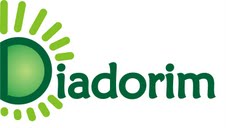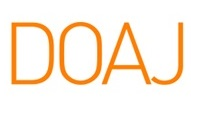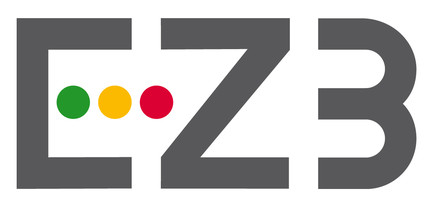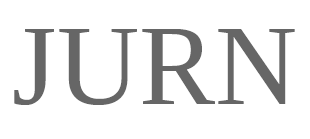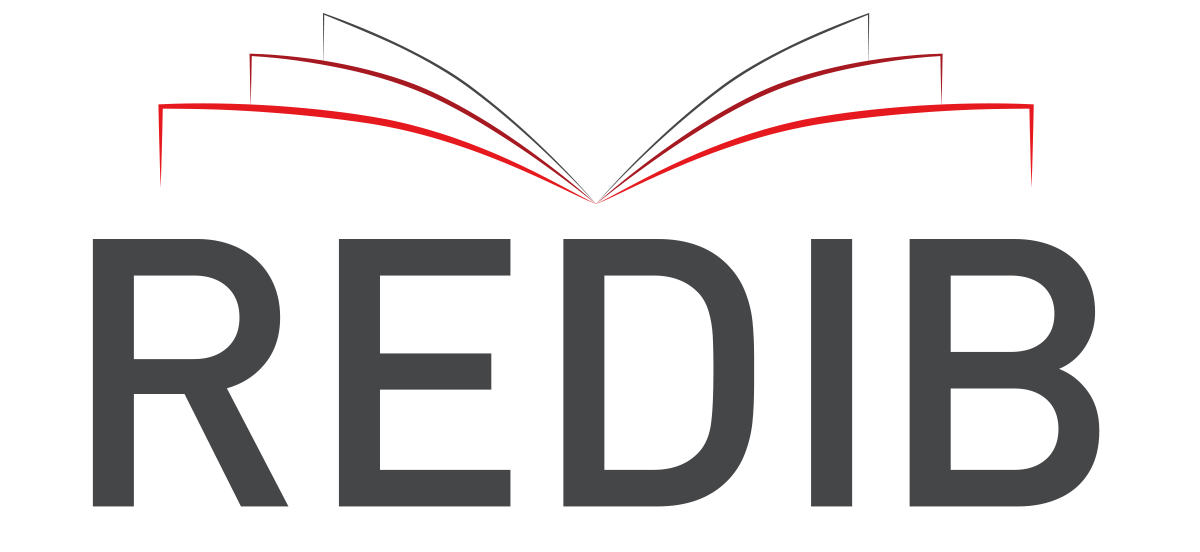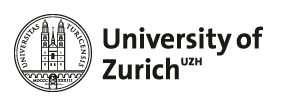Submissions
Author Guidelines
Each issue contains at least seven and at most ten articles. PhD researchers are the journal's preferential authors. Submissions by researchers in other graduation levels in joint authorship with a PhD researcher are accepted in all cases; submissions by non-PhD researchers without the co-authoring of a PhD may be accepted in exceptional cases, and will never represent more than one case in each seven articles in a given issue.
Submissions by foreign researchers are welcome, constituting the journal’s policy guidelines to dedicate 40% of the articles published in each number to such submissions (i.e., between two and three in every issue of seven articles, and four in every issue of ten articles).
I. General submission guidelines
1. The texts submitted to the journal must have twenty pages at most, and must follow the formatting rules described in (II) and (III) below;
2. Two originals must be sent, in .doc or .docx format: one of them with identification information (name, academic or institutional affiliation, email), and another one without this identification information. The original with identification must be inserted in the section “Manuscript transfer”, and the original without identification must be inserted in the section “Complementary documents transfer”.
3. In the event that their work is accepted with corrections, the authors must attend the recommendations from the reviewer(s); substantial alterations not recommended by the reviewers are not allowed;
4. The standard time for the conclusion of the recommended alterations is seven days.
II. Submission formatting norms
1. The submission document’s front page must contain the following elements in sequence:
1.1 In the document with identification:
- Article title in primary language
- Article title in secondary language (Portuguese or English)
- Name(s) of the author(s)
- Information about the author(s): Footnote, referred by an asterisk (*) after the name(s) of the author(s); includes department, faculty, university, city, state, country and email address
- Institutional affiliation
- Abstract in primary language
- Keywords in primary language
- Abstract in secondary language (Portuguese or English)
- Keywords in secondary language (Portuguese or English)
1.2 In the document without identification:
- Article title in primary language
- Article title in secondary language (Portuguese or English)
- Abstract in primary language
- Keywords in primary language
- Abstract in secondary language (Portuguese or English)
- Keywords in secondary language (Portuguese or English)
2. The document must be formatted in the font Garamond for all text elements, and according to the following specific formats for each element:
- Article title: Font 17; centralized paragraph, single spacing.
- Article title in secondary language: Font 17, italics; centralized paragraph, single spacing.
- Name(s) of the author(s): Font 12; centralized paragraph, single spacing.
- Information about the author(s): Font 9.5; single spacing (Footnote, referred by an asterisk (*) after the name(s) of the author(s); includes department, faculty, university, city, state, country and email address).
- Institutional affiliation: Font 12; centralized paragraph, single spacing (Includes the name of the university in italics, followed by city, state, country, without italics).
- Abstract in primary language: Font 9, with the word for ‘Abstract’ in the primary language in bold, and the rest of the text without bold; justified paragraph, 1 cm indent, 1,5 spacing. justified paragraph, 1 cm indent, 1,5 spacing.
- Keywords in primary language: Font 9, with the word for ‘Keywords’ in the primary language in bold, and the rest of the text without bold; justified paragraph, 1 cm indent, 1,5 spacing.
- Abstract in secondary language (Portuguese or English): Font 9, with the word for ‘Abstract’ in the secondary language in bold, and the rest of the text without bold; justified paragraph, 1 cm indent, 1,5 spacing.
- Keywords in secondary language (Portuguese or English): Font 9, with the word for ‘Keywords’ in the secondary language in bold, and the rest of the text without bold; justified paragraph, 1 cm indent, 1,5 spacing.
- Section titles: Font 12, small caps, bold; left-aligned paragraph, single spacing between lines, double spacing before and after the block (Numbering: 1, 2, etc.).
- Sub-section titles: Font 12, bold; left-aligned paragraph, single spacing between lines, double spacing before the block (Numbering: 1.1, 1.2, etc.)
- Text body: Font 12; justified paragraphs, 1 cm indent, single spacing.
- Examples: Font 11; left-aligned paragraph, 2 cm indent, single spacing between lines, double spacing before and after the block (Numbering: (1),(2), etc.).
- Verse and citations over 3 lines: Font 10, no italics; justified paragraphs, 2cm indent, single spacing between lines, double spacing before and after the block (Citations shorter than 3 lines: in the text body, between inverted commas, “..”).
- Picture captions: Font 10; centralized paragraph, 1 cm indent, single spacing single spacing between lines, double spacing after the block (Captions below the pictures).
- Table captions: Font 10; left-aligned paragraph, 1 cm indent, single spacing single spacing between lines, double spacing before the block (Captions before the tables).
- Footnotes: Font 9.5; left-aligned paragraph, single spacing
- References: Font 10; left-aligned paragraph, single spacing
3. The documents must be presented without any special formats such as headers, page numbers, word division or text in more than one column.
III. Reference and citation norms
References must come as the last item in the document, in the Vancouver system, as illustrated below.
1. General guidelines
On citations along the text body:
- Direct quoting: do not use All Caps; state the date and page of cited work; place the quote in inverted commas and the whole reference in parenthesis; e.g.: “A epilepsia pode ocorrer em muitas doenças infecciosas, como as causadas por vírus, bactérias e parasitas” (Brito, 2003, p. 102).
- Indirect citations: do not use All Caps; state the date and page of cited work; place the whole reference in parenthesis; e.g.: According to Brito (2003, p. 102), epilepsy may occur in several infectious diseases.
On the format of references at the end of the document:
- Font: Garamond, 10; left-aligned paragraphs, no indent, single spacing.
- Do not use All Caps for authors’ names.
- Do not use special formats (such as bold or italics) or inverted commas for titles or any element in the references.
- Use of capitals in titles: only the first letter of the titles should be in capitals (exceptions only for grammatical usage according to different languages, such as names of languages and nationalities in English, common nouns in German, etc.)
On the presentation of authorship in the complete final references:
- The author’s first name must be abbreviated; e.g.: Labov, W.
- When the author has more than one first name, no period is placed between them; e.g.: Coutinho, IL.
- Collective authors (entity authors, such as government branches) must be named in full, followed by acronyms when applicable; e.g.: Instituto Brasileiro de Geografia e Estatística (IBGE).
- For works by up to three authors, name every author according to the general rule above, separated by commas; e.g.: Lucchesi D, Baxter A, Ribeiro I.
- For works by more than three authors, name the first author only, according to the general rule above, and follow it by a comma and et al; e.g.: Xavier MF, et al.
Below are some models for the final references, taking into account the most common forms of publication. For complete instructions, including cases not contemplated in this summary, please see Item 4 of the University of São Paulo’s Vancouver system guidelines, at http://dx.doi.org/10.11606/9788573140569.
2. Norms for final references according to publication type
2.1 Whole books
Model:
Surname Name(s) of author(s), editorial role. Work title: subtitle. Translation, Translator’s name. Edition. City: Editor; year of publication. (Series, Vol.). [cited day, abbreviated month, year]. Available at: electronic publication address.
OBS.: Conditional elements: editorial role (applies only in the case of: editor, organizer, coordinator, complilator), subtitle (if there is one), Translation (if this is the case), Translator’s name (if this is the case), Edition (only if not the first edition), Series (if this is the case), Vol. (if this is the case), [cited day, abbreviated month, year] (if cited from an electronic publication), electronic publication address(idem).
Examples:
Labov W. Sociolinguistic patterns. Philadelphia: University of Pennsylvania Press; 1972.
Coutinho, IL. Gramática histórica. 7th ed. Rio de Janeiro: Ao Livro Técnico; 1976.
Chomsky N, Halle M. The sound pattern of English. New York: Harper and Row; 1968.
Teyssier P. História da língua portuguesa. Translation, Celso Cunha. 2nd ed. São Paulo: Martins Fontes; 1980.
Bellotto HL. Como fazer análise diplomática e análise tipológica de documento de arquivo. São Paulo: Arquivo do Estado e Imprensa Oficial do Estado; 2002. (Series Como Fazer, Vol. 8).
Schreibman S, Siemens R, Unsworth J, editors. A companion to digital humanities. Oxford: Blackwell; 2004. [cited 28 Oct. 2014]. Available at: http://www.digitalhumanities.org/companion.
2.2 Book chapters
Model:
Surname Name(s) of chapter's author(s). Chapter title. In: Surname Name(s) of author(s), editorial role. Work title: subtitle. Edition. City: Editor; year of publication. Referenced chapter’s number; p. chapter’s start page-chapter’s final page. [cited day, abbreviated month, year]. Available at: electronic publication address.
OBS.: Conditional elements: editorial role (applies only in the case of: editor, organizer, coordinator, complilator), subtitle (if there is one), Translation (if this is the case), Translator’s name (if this is the case), Edition (only if not the first edition), Referenced chapter’s number (only if numbered), [cited day, abbreviated month, year] (if cited from an electronic publication), electronic publication address (idem).
Examples:
Catani AM. O que é capitalismo. In: Spindel A. Que é socialismo e o que é comunismo. São Paulo: Círculo do Livro; 1989. p. 7-87.
Lucchesi D, Baxter A. A transmissão linguística irregular. In: Lucchesi D, Baxter A, Ribeiro I, organizers. O português afro-brasileiro. Salvador: EDUFBA; 2009. p. 101-124.
2.3 Dissertations and theses
Model:
Surname Name(s) of author(s). Work title: subtitle [dissertation]. City: Institution where presented; year o presentation. [cited day, abbreviated month, year]. Available at: electronic publication address.
Surname Name(s) of author(s). Work title: subtitle [thesis]. City: Institution where presented; year o presentation. [cited day, abbreviated month, year]. Available at: electronic publication address.
OBS.: Conditional elements: subtitle (if there is one), [cited day, abbreviated month, year] (if cited from an electronic publication), electronic publication address (idem).
Examples:
Banza APF. A linguagem dos documentos em português da chancelaria de D. Afonso III. [dissertation]. Lisbon: Faculdade de Letras, University of Lisbon; 1992.
Bandeira M. Reconstrução fonológica e lexical do protocrioulo do Golfo da Guiné [dissertation]. São Paulo: Faculdade de Filosoia, Letras e Ciências Humanas, University of São Paulo; 2017.
2.4 Journal articles
Model:
Surname Name(s) of author(s). Article title. Journal title. Year of publication, abbreviated month;volume(number):page numbers. [cited day, abbreviated month, year]. Available at: electronic publication address.
OBS.: Conditional elements: [cited day, abbreviated month, year] (if cited from an electronic publication), electronic publication address (idem).
Examples:
Abaurre MBM. Acento frasal e processos fonológicos segmentais. Letras de Hoje, 1996;31(2):41-50.
Coleti JS, Almeida GMB. Aspectos morfológicos da terminologia da nanociência e nanotecnologia. Filologia e Linguística Portuguesa, 2010;12(2):271-294. [cited 12 Dec. 2017]. Available at: http://www.revistas.usp.br/flp/article/view/59869.
2.5 Digital resources: homepage, database, corpus, computer program
Model:
Surname Name(s) of author(s) or Name of collective author (Acronym). Name of webpage [homepage]. Place of publication: Responsible entity; Date of publication. Last saved on: Last saved date. [cited day, abbreviated month, year]. Available at: electronic publication address.
Surname Name(s) of author(s) or Name of collective author (Acronym). Name of corpus or database [internet]. Place of publication: Responsible entity; Date of publication. Last saved on: Last saved date. [CD-ROM]. [cited day, abbreviated month, year]. Available at: electronic publication address.
Surname Name(s) of author(s) or Name of collective author (Acronym). Name of computer program [computer program]. Version: version number. Place of publication: Responsible entity; Date of publication. Last saved on: Last saved date. [CD-ROM]. [cited day, abbreviated month, year]. Available at: electronic publication address.
OBS.: Conditional elements: Acronym (if there is one), Version: version number (if this information is available on the electronic resource), Place of publication (idem), Responsible entity (idem), Date of publication (idem), Last saved on: Last saved date (idem), [CD-ROM] (if this is the case), [cited day, abbreviated month, year] (if cited from an electronic publication), electronic publication address (idem)
Examples:
Comunidade dos Países de Língua Portuguesa (CPLP). Objectivos [homepage]. 2017. [cited 12 Dec. 2017]. Available at: https://www.cplp.org/id-2763.aspx.
Instituto Brasileiro de Geografia e Estatística (IBGE). Censo demográfico 2010 [internet]. [cited 06 Apr. 2016]. Available at: https://censo2010.ibge.gov.br.
Xavier MF, et al. Corpus informatizado do português medieval [internet]. Lisbon: Universidade Nova de Lisboa. [cited 12 Dec. 2017]. Available at: http://cipm.fcsh.unl.pt.
Boersma P, Weenink D. Praat: doing phonetics by computer [computer program]. Version 5.4.08. Amsterdam: Universiteit van Amsterdam; 2014. [cited 25 Sep. 2017]. Available at: http://www.fon.hum.uva.nl/praat.
Microsoft. Microsoft Access [computer program]. Version 14.0; 2010.
Submission Preparation Checklist
All submissions must meet the following requirements.
- The submitted work is original and unpublished, and is not currently under evaluation for publication in other journals; all exceptions must be justified in “Comments to the editors”.
- The submitted document is in the format .doc or .docx
- Electronic addresses (URLs) for the references have been provided when applicable.
- Pictures and tables are inserted in the text, not presented as an appendix.
- In the case of submissions for sections with peer review (Papers), the instructions available at Ensuring blind peer reviews have been followed.
- The text follows the patterns of style and reference formatting described in the Author Guidelines available on the journal’s website.
Papers
Standard policy for the section:
Duplicados
Artigos em duplicata, de 2014; arquivados em 6/3/2018Copyright Notice
Copyright is transferred to the journal for the online publication, with free access, and for the printing in paper documents. Copyright may be preserved for authors who wish to republish their work in collections.
Privacy Statement
The names and addresses informed to this journal will be used exclusively for the services conducted by this publication, and will not be made available for other purposes or to third parties.





